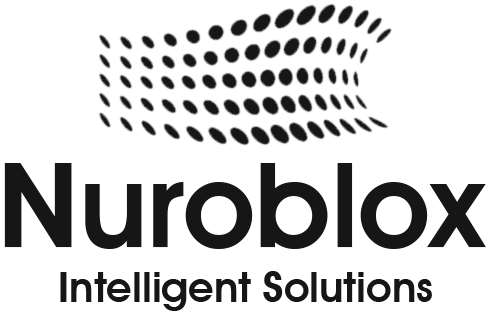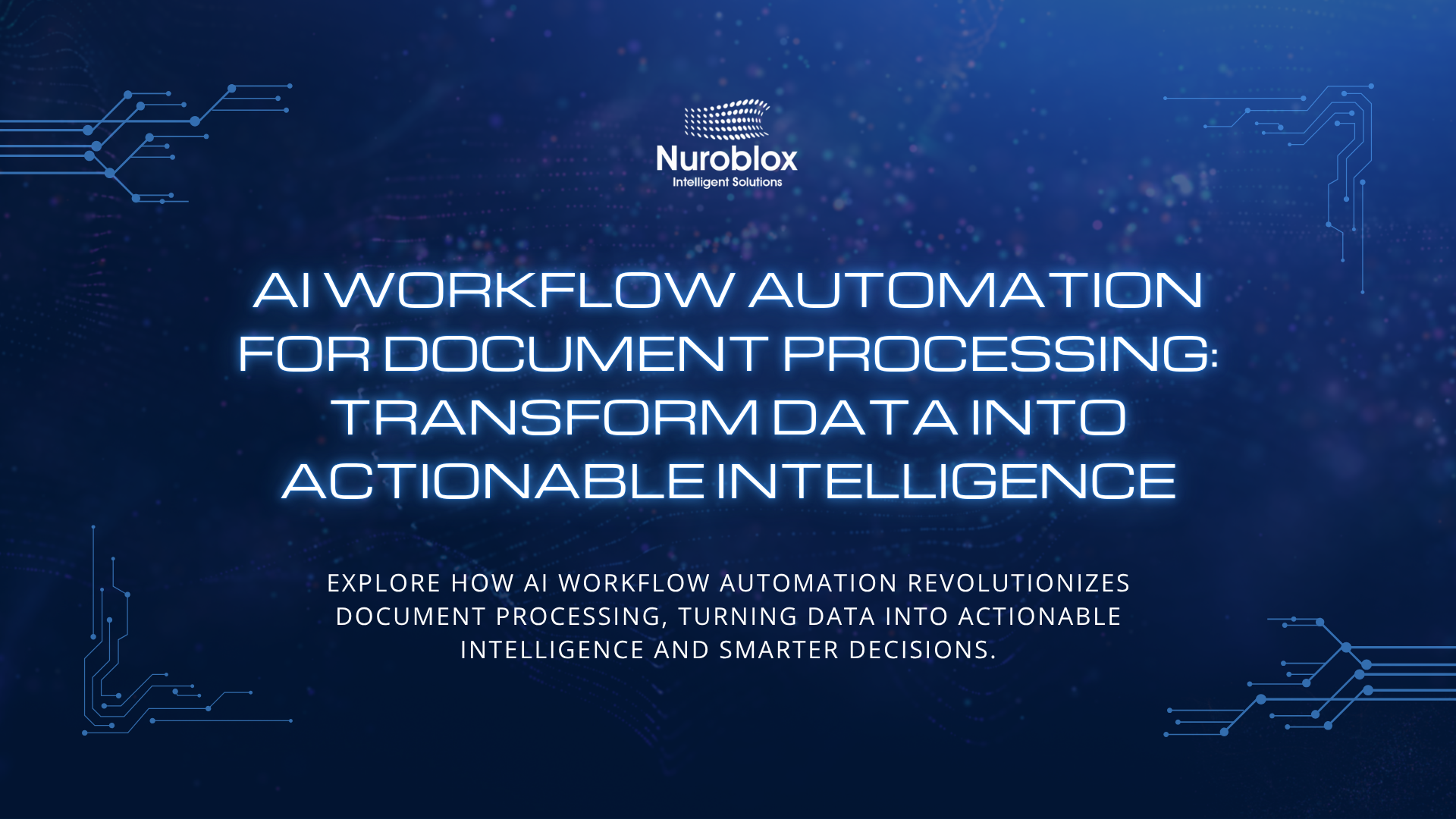AI Workflow Automation for Document Processing: Transform Data Into Actionable Intelligence
Organizations process millions of documents daily like invoices, contracts, forms, reports, and correspondence; yet most rely on manual methods that consume 30-40% of operational costs. AI workflow automation for document processing represents a paradigm shift, combining intelligent document recognition, automated data extraction, and intelligent workflow orchestration to eliminate tedious manual tasks. This comprehensive guide explores how enterprises can leverage cutting-edge AI technologies to transform unstructured document data into strategic business intelligence, accelerate decision-making timelines, and achieve remarkable ROI improvements.
Modern businesses face unprecedented document complexity. From multiformat PDFs to handwritten forms, legacy systems to cloud-based repositories, organizations struggle to extract accurate insights efficiently. Workflow automation powered by AI addresses this challenge by automating the entire document lifecycle from capture and classification to extraction, validation, and integration with business systems. Whether you’re handling accounts payable, loan applications, insurance claims, or HR onboarding, understanding how AI workflow automation can revolutionize your document processes is essential for competitive advantage.
The Business Case for AI Workflow Automation in Document Processing
Document processing remains one of the most labor-intensive functions across industries. Financial services teams spend countless hours manually extracting invoice data, healthcare administrators process mountains of patient records, and legal departments review lengthy contracts. These repetitive tasks not only drain resources but introduce costly human errors and delays.
AI workflow automation addresses core business pain points – organizations report 60-80% reductions in processing time, 85-95% improvements in data accuracy, and processing cost reductions of 50-70%. Companies implementing intelligent document processing systems see payback periods as short as 6-12 months. Beyond immediate cost savings, these solutions unlock strategic benefits including improved compliance, faster time-to-market, enhanced customer satisfaction, and the ability to reallocate skilled employees toward high-value analytical work.
The financial impact justifies enterprise investment. A mid-sized insurance company processing 50,000 claims monthly can save $200,000+ annually by eliminating manual document handling. Law firms can accelerate contract review cycles from weeks to days. Procurement teams reduce order-to-cash cycles significantly. These aren’t theoretical projections, they represent documented outcomes from early adopters leveraging intelligent automation technologies.
Key Technologies Powering Document Processing Automation
Modern document processing automation relies on several converging technologies working in concert –
Optical Character Recognition (OCR) and Advanced Vision AI form the foundation, converting image-based documents into machine-readable text with exceptional accuracy. Modern vision AI engines recognize not just text but layout, tables, handwriting, and complex document structures, handling 99%+ accuracy rates even for challenging formats.
Natural Language Processing (NLP) extracts semantic meaning from unstructured text. Rather than merely identifying words, NLP understands context, relationships, and intent; crucial for extracting information from narrative sections, identifying document types, and validating extracted data against business rules.
Machine Learning Classification Models learn document patterns across your organization’s specific processes. These models improve continuously, adapting to new document variations, templates, and business requirements without constant manual reconfiguration.
Intelligent Workflow Orchestration connects automation components with your enterprise systems. This intelligent automation layer routes documents through appropriate processing paths, triggers approvals when needed, integrates with databases and APIs, and handles exceptions intelligently.
Robotic Process Automation (RPA) bridges legacy systems, automating data entry into systems that lack modern APIs, and orchestrating multi-system workflows that span your technology stack.
How AI Extracts Data from Complex Documents
Data extraction with AI transcends simple text recognition. Consider an invoice, it contains multiple data types – vendor name, invoice numbers, line items with descriptions and amounts, tax calculations, and due dates. These elements appear in varying positions across different vendor formats. Intelligent document processing systems tackle this complexity through layered intelligence.
First, the system classifies the document type, enabling template-appropriate processing rules. Computer vision locates relevant sections like header areas containing vendor information, body areas containing line items, footer areas containing totals. OCR extracts candidate values with confidence scores, while NLP validates extracted data against known vendors, legitimate amount ranges, and expected date formats.
Machine learning models trained on thousands of similar documents recognize patterns invisible to rule-based systems. They understand that a vendor’s legal name might appear differently than the purchasing record, connect related line items, and identify erroneous extractions. Validation engines cross-reference extracted data against master records, flagging inconsistencies for human review.
The result – automated data extraction that achieves 95%+ accuracy on standard documents while intelligently flagging exceptions requiring human attention. This approach balances efficiency with accuracy, eliminating 90%+ of manual review work while maintaining business-critical validation.
Industry Applications and Use Cases
Financial Services and Accounts Payable
Invoice processing represents a classic AI workflow automation application. Accounts payable teams traditionally spend 15-20 minutes per invoice, reviewing vendor details, validating amounts, ensuring proper coding, and matching supporting documentation. AI-powered systems process this workflow in seconds, automatically
- Classifying invoices and extracting vendor data
- Validating invoice amounts against purchase orders and receipts
- Detecting duplicate submissions and fraud indicators
- Routing to appropriate approval queues based on amount and vendor
- Integrating with accounting systems for automated posting
Leading financial institutions report processing 100,000+ invoices monthly through intelligent automation, with minimal manual intervention required.
Insurance and Claims Processing
Insurance claims represent high-value documents containing critical information across multiple pages. Intelligent document processing systems extract policyholder details, claim specifics, supporting medical records, photographs, and claim amounts automatically. Workflows route claims through appropriate processing channels, straightforward claims move to automated approval, complex claims involving multiple coverages route to specialists with complete extracted data pre-populated.
Processing time improvements reach 70%, customer satisfaction increases 25%, and fraud detection improves significantly as systems flag anomalies systematically.
Healthcare and Patient Records
Healthcare organizations process enormous document volumes like patient intake forms, medical histories, test results, prescriptions, and insurance documentation. Workflow automation with AI extracts patient demographics, medical histories, allergies, current medications, and insurance information automatically, integrating with electronic health records systems.
This improves patient safety, reduces administrative burden on clinical staff, accelerates care delivery, and ensures comprehensive medical history availability during patient encounters.
Legal and Contract Management
Law firms and corporate legal departments leverage intelligent automation for contract review, due diligence, and document analysis. AI systems extract key contractual terms like obligations, liability limitations, termination clauses, financial commitments from lengthy documents, enabling lawyers to focus on negotiation and strategy rather than document review.
Processing times for contract analysis reduce from days to hours, enabling faster deal closure and improved negotiation positioning.
Procurement and Purchase-to-Pay
Procurement teams manage purchase orders, receipts, and invoices across multiple suppliers and formats. Intelligent automation extracts purchase order details, matches receipts to orders, validates invoices, and orchestrates the complete three-way match process automatically.
Organizations report 50%+ reduction in procurement cycle time and elimination of invoice payment delays.
Implementing AI Workflow Automation: Best Practices and Strategy
Start with Process Assessment
Successful implementation begins with honest evaluation of current document processes. Which documents consume most labor? Which processes suffer from errors? Which documents appear in multiple formats? This assessment identifies high-impact opportunities offering clear ROI.
Target processes exhibiting these characteristics – high document volume, repetitive handling, multiple documents types, clear validation rules, and integration points with existing systems. Processes with these traits typically deliver fastest implementation timelines and most obvious ROI metrics.
Choose the Right Technology Platform
Selecting technology determines implementation success. Modern platforms should offer –
- Comprehensive capability including OCR, NLP, machine learning, and workflow orchestration
- Low-code or no-code interfaces enabling business teams to configure workflows without extensive programming
- Scalability handling production document volumes without performance degradation
- Enterprise security including encryption, audit trails, and compliance certifications
- Integration ecosystem connecting with your existing enterprise systems seamlessly
Platforms offering visual workflow builders, pre-built industry templates, and professional services support accelerate time-to-value significantly.
Pilot with Clear Success Metrics
Begin with a focused pilot processing 10-20% of relevant documents. Define specific success metrics: processing time per document, accuracy rates, manual review percentage, cost per document, and process cycle time. These metrics establish baseline comparison points and demonstrate ROI to stakeholders.
Successful pilots typically reduce manual processing time 70-85%, improve accuracy to 95%+, and cut processing costs 50-60%. These results, measured over 3-6 months, justify broader enterprise rollout.
Address Change Management Thoughtfully
Automation affects team members currently performing these tasks. Effective organizations –
- Communicate transformation benefits clearly, emphasizing that automation eliminates tedious work rather than eliminating jobs
- Reskill affected employees for higher-value analytical work
- Involve team members in process design, leveraging their expertise to identify edge cases and validation requirements
- Celebrate quick wins publicly, building momentum and demonstrating value
Organizations handling change management effectively see faster adoption, fewer implementation challenges, and better long-term outcomes.
Establish Governance and Continuous Improvement
Implement governance establishing –
- Quality monitoring tracking accuracy, processing time, and exception rates
- Model retraining protocols updating machine learning models as new document types appear
- Exception handling procedures ensuring unusual documents receive appropriate attention
- ROI tracking measuring ongoing cost savings and identifying optimization opportunities
Successful organizations review metrics monthly, identify improvement opportunities, and implement optimizations continuously. This ongoing refinement typically yields additional 10-15% efficiency improvements annually.

Direct Cost Reduction
Organizations quantify ROI primarily through labor cost reduction. Calculate current labor cost per document (staff cost + overhead ÷ documents processed monthly), multiply by projected monthly document volume, and apply expected automation rates (85-95%). Multiply the reduced labor cost by 12 months to establish annual savings.
A team processing 10,000 invoices monthly at $5 per invoice ($50,000 monthly cost) applying 85% automation achieves $7.5 million in reduced annual labor costs, justifying significant technology investment.
Cycle Time Improvement
Beyond labor costs, cycle time improvements generate substantial business benefits. Accelerating invoice processing reduces working capital requirements. Faster claims processing improves customer satisfaction. Quicker contract review accelerates deal closure. Quantify these benefits by multiplying cycle time reduction by relevant financial metrics (working capital cost of capital, customer lifetime value impact, deal value acceleration).
Quality and Compliance Benefits
Improved accuracy reduces costly errors like duplicate payments, missed compliance requirements, security breaches from misfiled documents. Insurance companies report fraud detection improvements of 20-30% with intelligent automation. Regulatory compliance improves with consistent processes and comprehensive audit trails. Quantify these benefits conservatively, as they often exceed direct labor savings.
Customer Experience Improvements
Faster processing improves customer experience. Insurance customers receive claim decisions faster, loan applicants get faster approvals, patients experience faster care. These improvements increase customer satisfaction, retention, and lifetime value; benefits extending well beyond direct automation ROI.
Common Challenges and Solutions
Unstructured Document Variations
Challenge – Real-world documents vary dramatically in format, layout, and content structure. Solution – Modern AI systems handle this variation naturally. Rather than rigid rule-based extraction, machine learning models adapt to document variations. Implement classification first, routing documents to appropriate processing models. Use continuous learning, updating models as new variations emerge.
Data Validation Complexity
Challenge – Extracted data must meet multiple validation requirements like format correctness, business rule compliance, system integration requirements. Solution – Implement multi-stage validation using pattern matching for format validation, business rules engines for compliance, and master data matching for reference data validation. Design workflows routing invalid data to appropriate human reviewers rather than blocking processes entirely.
Legacy System Integration
Challenge – Connecting to older systems lacking modern APIs complicates workflow automation. Solution – Combine intelligent process automation with RPA technologies. RPA handles legacy system interaction while AI manages data extraction and workflow logic, creating end-to-end automation despite underlying technology limitations.
Change Management Resistance
Challenge – Existing teams may resist changes affecting their roles. Solution – Frame automation as opportunity, not threat. Involve teams in implementation, leverage their expertise, and reskill toward higher-value work. Communicate benefits clearly and celebrate successes visibly.
Conclusion
AI workflow automation for document processing transforms how organizations handle critical business documents. By combining intelligent document recognition, automated data extraction, and intelligent workflow orchestration, enterprises eliminate tedious manual tasks, dramatically improve accuracy, and accelerate business processes. The financial case is compelling like direct labor savings, improved working capital, faster decision-making, and compliance improvements typically deliver 200-400% ROI within 18-24 months.
Organizations beginning their transformation should start with honest process assessment, pilot with clear metrics, and address change management thoughtfully. Choose platforms offering comprehensive capability, integration flexibility, and low-code configuration. Measure success rigorously, and commit to continuous improvement as additional document types and processes become candidates for automation.
The organizations leading their industries aren’t those processing documents faster, they’re those who’ve eliminated manual document processing entirely, reallocating human expertise toward strategic analysis and business growth. Begin your AI workflow automation journey today, starting with your highest impact document processes, and position your organization for sustainable competitive advantage.


